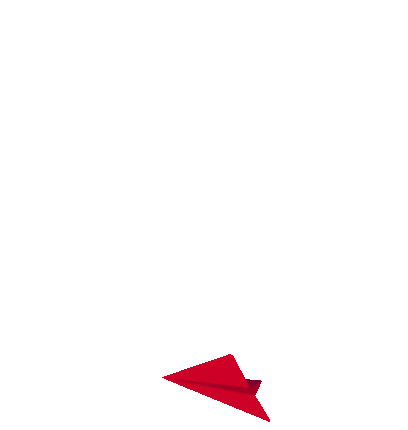blog Entrepreneurship | 5min Read
Published on October 7, 2021

Entrepreneurial workshops have one thing in common – they are run by a set of successful entrepreneurs. During the program, each of them has experiences to share, failures they encountered, and how they made a start-up possible. They teach students of this century, how to actually mitigate risks and elevate them to success.
Ideas are easy, implementation is hard.
An entrepreneur is someone who has a vision for something and a ‘want’ to create it. The best start-ups generally come from someone who dares to convert a perceived risk into an asset. But there is a reason why some start-ups take off while others crash and burn. Just passion and a clever idea are not enough to build yourself a great story. Diligence, hard work, efficiency, and resources all play a significant part in turning an idea into an epic success story that inspires others. And then there’s that secret ingredient.
It is not about ideas. It is about making ideas happen.
Entrepreneurs should have the gift of seeing things in the present, even if they are in the future. To start a
successful start-up three simple things are needed – An idea, people who want your idea, and a burning desire to succeed.
Here are 9 tips from an Entrepreneur Workshop that will help you in your entrepreneurial journey:
1. Time Management
Managing time efficiently is the hallmark of a successful venture. Judicious allocation of time and resources implies a well-thought-out plan and a smooth-oiled work culture. Prioritizing time, resources, and personnel based on the tasks at hand will also ensure that important tasks will get done. Remember, time is money!
2. The Right Work, By The Right Person
Working on the right thing, by the right person is probably the only thing more important than working hard. Trust your instincts and do not hesitate to delegate when the situation calls for it. Do not be afraid to assert yourself. Have confidence in your abilities. Every time you state what you want, it is a message to both you and the others about what you think is possible. In the end, nothing should deter you or your team from giving the best. Each member of the team should work to understand exactly where their strengths are and work together to ensure that every task gets completed by the person with the best expertise.
3. Grow Intelligently
All that goes up must come down – but the time you spend staying up is always in your hands. Even if you do not have the perfect idea to begin with, you can likely adapt. Invent and reinvent. Constantly.
Grow intelligently and not just rapidly. Setting high expectations, especially of oneself, and living up to them is the key to success. Plan your growth, chart out your goals, and work towards achieving them.
The start-up community is a close knit group. Seek out fellow entrepreneurs and talk to them about the challenges and thrills you are facing on your entrepreneurial journey. Networking events and social media is a great platform to meet entrepreneurs and learn about their experiences. Networking also provides an opportunity to form valuable partnerships or collaborations. And an Entrepreneur Workshop like Ivy Early Entrepreneur is the best place to grow your network and find mentors.
5. Mentorship
A little help, timely advice and encouragement goes a long way in helping you do better. A good mentor is a critical asset. Mentors share knowledge, valuable contacts and invaluable nuggets from their oodles of experience that helps you hack through the thickets of start-up struggle. A mentor is your guardian angel. Every start-up team and every seasoned entrepreneur needs one good mentor.
6. Health Is Wealth
The importance of health cannot be overstated. With the obvious workload of running a fledgling start-up comes the added burden of hopes, aspirations and expectations of many. All this can create a very stressful environment that has the potential to impact your health adversely. But remember, your health is what is keeping everything afloat. Take care of your health and everything else will take care of itself. Eat healthily, take time-offs, exercise regularly, and meditate.
7. Look After Your Finances
While it is important to chase the vision and not the money, managing your finances is of paramount importance. With increased revenue generation comes many temptations – increase the office space, hire more resources, buy new machinery etc. But decide on the wants with a very level-headed why. Ensure that your earnings can absorb the cost of growth.
Preparation is important, but the execution is even more important. What sets apart a successful venture is the ability to execute an idea rather than just pitch the idea alone. Execution of an idea tests the concept and helps to critically analyze the plan. Execution also serves as a reality check and helps you to fine-tune your initial idea and incorporate improvements into the model. The best execution geared with the perfect timing results in a successful business.
9. The Secret Ingredient...
The value of an idea lies in the use of it. There are plenty of resources and technological support to help budding entrepreneurs bring their idea to life. Start-up accelerators, specialized courses, mentorship programs, and workshops help you to run before you even learn to walk.
Entrepreneurial Workshops’ curriculum will help you develop an understanding of the major functional areas of a business. They will also train you in managerial decision-making in a business simulation and teach you important lessons on success and failure from an integrated case study.
Big Red Education and our Ivy Early Entrepreneur Program
In our entrepreneurial workshop – Ivy Early Entrepreneur, students go through the process of business development and leave the entrepreneur program having completed a business model canvas, competitive analysis, financial model, minimum viable product, and a pitch deck.
Students get an opportunity to learn from successful entrepreneurs who are alumni of reputed universities and are experts in their respective industries.
These experts serve as coaches guiding students through the processes of developing a business concept. Risk-Taking, Decision Making, Critical Thinking, Problem Solving, Communication &
Storytelling, Design Thinking & Innovation, and Opportunity Recognition are a few of the key learning areas of our program.
On successfully completing the entrepreneur workshop, the guaranteed internship will be extended to all the students within our partner firms and with most of the mentors teaching the program. Students will be provided with a certificate of participation by Big Red Education. This certificate can be used for your college portfolio.
Ivy Early Entrepreneur
 11th – 17th Jan 2022
11th – 17th Jan 2022
Idea Generation | Market Research | Design Thinking | Pitching






















